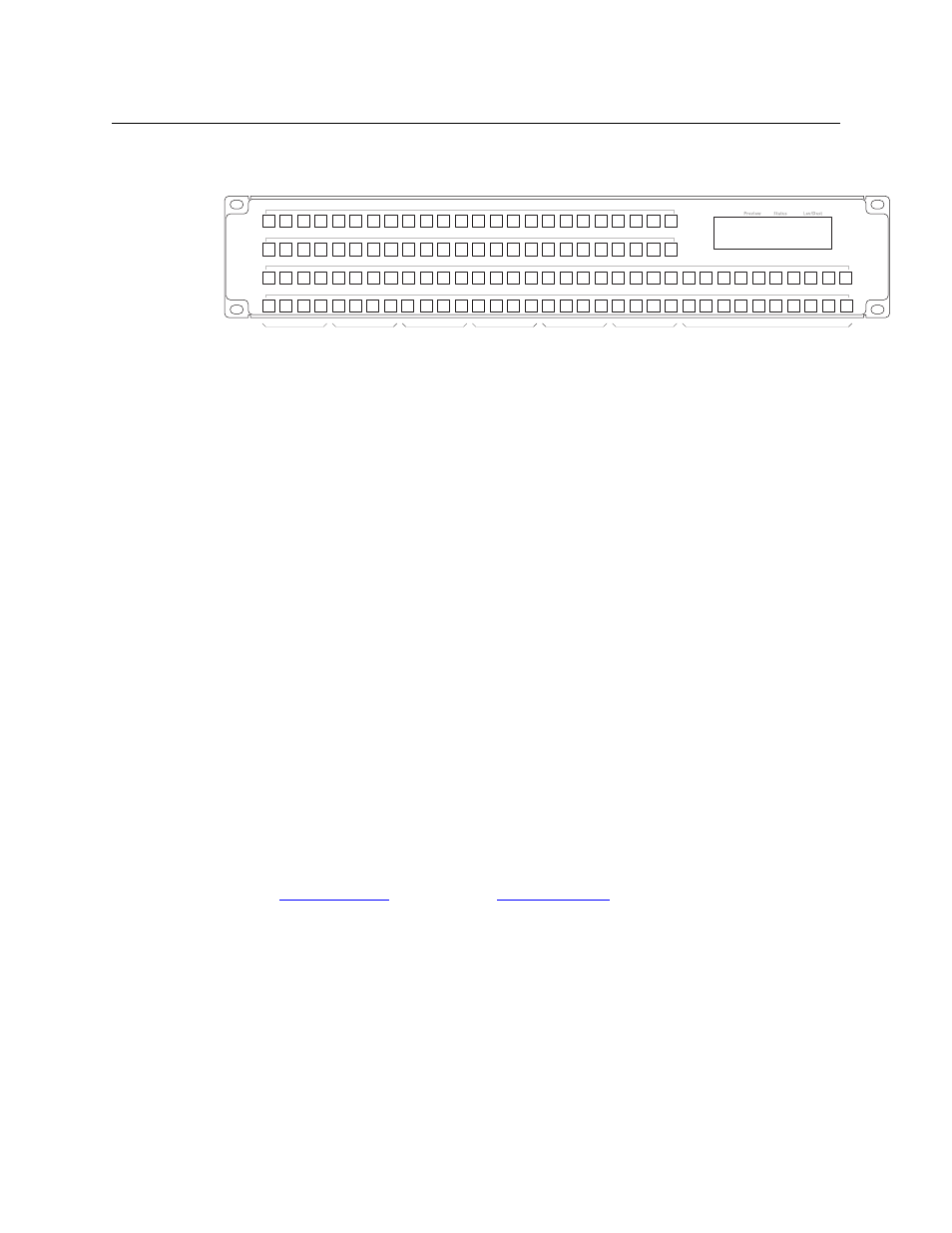Name sets, Broadcast routes – Grass Valley NV9607 v.1.1 User Manual
Page 55

45
NV9607
User’s Guide
As another example, this organization provides 6 destinations and up to 32 sources available for
each one, again with 20 buttons assigned to other functions:
Your panel
—
if it is in multi-destination mode
—
might or might not be organized as in these
examples. Consult your administrator to determine the organization of buttons.
To perform a take, simply select a source. You might need to press a source shift button to make
available the source you want. The take occurs immediately when source preview mode is off.
When the panel is in source preview mode, it is necessary to press a ‘Take’ button to complete
the take.
When you press a source button, the selected source appears next to the destination in the
display. In source preview mode, the source name appears in the ‘Preview’ column until you
press ‘Take’ At that point, the source moves to the ‘Status’ column (for the destination) and
disappears from the ‘Preview’ column.
Name Sets
NV9000-SE Utilities allows configurers to define multiple name sets. Each name set contains
alternate names for any and all devices in the NV9000 system. The alternate names can appear
in the displays of your panel (and elsewhere).
Further, your panel can have a ‘Name Set Toggle’ buttons that allows you to switch between the
“default” name set and the system mnemonics. Whichever name set you are currently using is
the active name set.
There is always a system name set. That name set includes the device names defined within the
NV9000 configuration. Any other name sets are optional.
Note that when the panel is displaying alternate names, and a device does not have an alternate
name, the panel displays the system name.
Name sets are defined in NV9000-SE Utilities under the ‘System Management’ page. See the
appropriate section in the NV9000-SE Utilities User’s Guide.
on page 39 and
Broadcast Routes
It is easy to route a source to multiple destinations for audio and video routers. You place the
panel in hold mode with the hold button.
In contrast, machine control routes are typically point-to-point. Therefore, to control multiple
machines requires that you perform a “broadcast” operation using a ‘Broadcast’ button.
In “broadcast mode,” the source device issues control commands to all destination devices
—
but only one destination (the first one you connect to the source) can respond with status.
Broadcast routes can be performed in limited X-Y mode only.
Dest A
Other Functions
Dest B
Dest C
Dest D
Dest E
Dest F